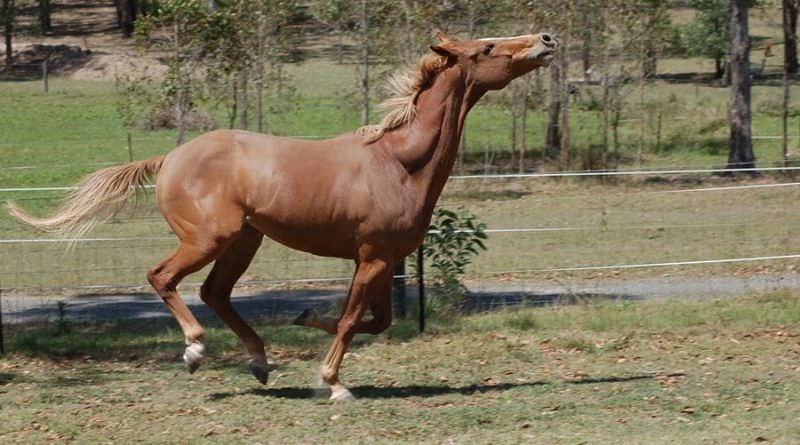Labels Matter: Is my horse a “jerk”?
We all know that horses can’t be offended by being called names – but how you describe your horse still matters!
In this article, inspiring UK-based coach and horse trainer, Anna French, explains why the way we choose to label horses and their behaviour can be crucial to training ethically, safely, and effectively.
“My horse is being a jerk”, “my mare has always been dominant and now she’s napping in the school”, “my colt is a brat and has started rearing on the way to the field”, “my TB is really stubborn” – sound familiar?
Here in the UK at the moment it’s dark, it’s wet, it’s cold and when things that should be straightforward don’t go according to plan, it’s frustrating. Social media can seem like a great platform to vent and chat with people who are going through the same things.
While it can help us feel better to know we’re not alone, these kinds of posts can actually hinder us in finding a solution.
Why?
Firstly, this kind of language is limiting – what we’re describing with “being a jerk” isn’t a behaviour, it’s how we feel about a set of behaviours, but what it does is create a mental image of the horse’s personality – we’re labelling the horse. This creates a limiting mind-set for us – the horse is just doing it because that’s what he’s like; we don’t think about it more deeply. It is also a circular argument – he does it because he’s a jerk, we know he’s a jerk because he does it.
This means that we’re less likely to expect that a full solution is possible – if we’re having leading problems, we may get a pressure halter; if we’re having problems tying up outside the stable to groom, we may just groom inside the stable instead. The behaviour is happening because of the horse’s personality so they’re always going to be like that and we’ll just work around it.
The second issue is that, if we’re looking for advice, using this kind of language subconsciously creates a negative mental image for the people reading the post – they’ve not seen the horse or the behaviour so this is all they have to go on. If we’re saying the horse is a jerk and he’s done xyz, a lot of the advice that tends to be offered is conflict-based and gives the horse’s motivation and welfare absolutely no consideration whatsoever.
There are multiple issues with this kind of advice:
- it’s not fair or ethical – check out the humane hierarchy
- it’s often not safe for human or horse – if a horse is already showing behaviour motivated by fear/stress/anxiety, adding shouting, hitting, more tack, “moving his feet” etc is not going to calm the situation down and the horse is likely to escalate before (possibly) giving up
- because the cause of the behaviour hasn’t been addressed, further issues are likely to surface sooner or later (further cementing the idea that the horse is a “jerk”)
- seeing a lot of this advice normalises the idea of using punishment and force
So, how can we frame things differently for different results?
When we’re looking at an unwanted behaviour, first we need to accurately describe it. What exactly did the horse do? What came before that? What was the context? What was the horse trying to achieve?
Take a look at this great list of words to avoid when describing behaviours.
The examples below frame the issue differently and lead to a different kind of response. Thinking about describing the behaviour, in the second example, also helps us structure our thoughts and can bring us to our own conclusions.
Description 1: “My horse is an impatient brat and keeps door banging. How do I make it stop?”
Solutions: “Nail a carpet to the door”, “Water gun”, “Hang thistles on the door”, “Pawing bracelets”
Description 2: “The horse banged on the stable door after I got to the yard this evening. Before they started banging, they were standing at the stable door with their ears forward; they turned their head quickly to the side and looked straight at me again a couple of times. When this happened, it was 5.30pm, their haynet was empty and the two horses opposite had just been fed. The horse wanted food.”
Solution: “Come to an agreement with the person who fed the other two horses to put something in for yours too; consider giving more hay and/or using trickle nets to make it last longer – horses’ digestive systems are designed to be processing food constantly; they don’t do well with meals”
It’s really important to be realistic about how horses think and their motivations – they do not think about how what they are doing makes us feel, only what the consequences are to them. They don’t think “if I do x, she will feel undermined / ashamed / frightened / angry”, just “I feel bad, I need something to change now”. They are not “testing us”, “seeing what they can get away with” or “being dominant” (dominance does not apply to horse/human relationships), they just behave how they feel.
While we can use words to negotiate and describe how we feel and use words to negotiate, horses’ behaviour is their voice – they can explain by showing us but we need to be ready to listen. They are so very generous to us and we have every aspect of their lives in our hands; we owe it to them and it can make life a lot simpler and safer for us too.
Anna French is a UK-based coach who focuses on giving both adults and children the tools to work calmly and effectively with their horses. For more information and to see how Anna may be able to help you, check out her Facebook page.







